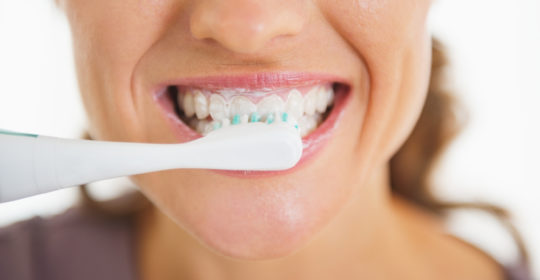
Manual vs Electric Brushes
It is a very common debate between the traditional manual toothbrush, and the modern electrical powered brush. Many people have assumptions about both products, but never really know the main cleaning differences between the two.
At the end of the day, the most important factor to note is that you are brushing at least twice a day, regardless if it is a manual or electric powered brush. When coming to a decision on which type of technology is best suited to your mouth and budget, there are a few things to consider:
Manual:
Manual brushes come in many shapes, sizes and bristles qualities (soft, medium and hard). They are often a fraction of the price of an electric brush, and can still execute a thorough clean when used correctly. Many manual brushes available in todays market come with inbuilt tongue and mouth cleaners, meaning they will clean more than just your teeth and gums. The bristles on many modern brushes will extrude at an angle, assisting in cleaning the areas a traditional manual brush may miss. However, the size and shape of the manual brush head can often be a tricky task in reaching awkward parts of the mouth such as behind the teeth or the very back to the wisdom tooth area.
Electric:
Due to the shape and intensity of an electric brush, they have been known to carry out a more thorough clean than the traditional manual brush. Many designs these days now have inbuilt timers which can assist with brushing consistency. An electric powered brush also allows people who have difficulties with the reciprocating motion of a manual brush to still execute a thorough clean twice daily. Some people find electric brushes a burden to keep fully charged, or constantly replace batteries. It is recommended that you keep your electric brush is fully charged when brushing, as a decrease in power will often affect the performance of the brush.
Brushing tips and techniques:
- If your brush doesn’t have an inbuilt timer, try using a stopwatch to measure two minutes of brushing
- Use gentle, shorter strokes, ensuring you reach the whole tooth (up the the gum line)
- If you have crowns, fillings etc. be sure to pay special attention to these areas
- Make sure you cover every tooth’s outer, inner and chewing surfaces (start with the bottom, then move to the top)
- After cleaning your teeth, brush your tongue to remove any left over debris. This will also help maintain fresh breath
- Use good quality toothpaste
- Remember to floss at least every second day to remove food particles from the hard to reach places between your teeth.







Most Commented